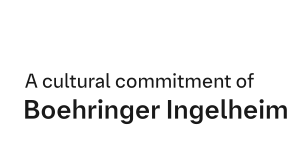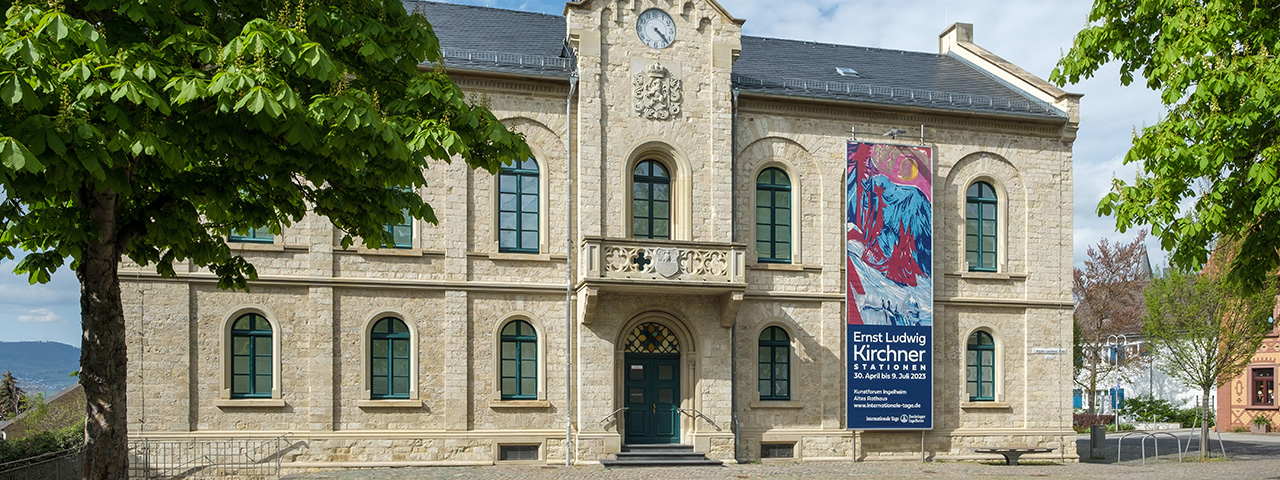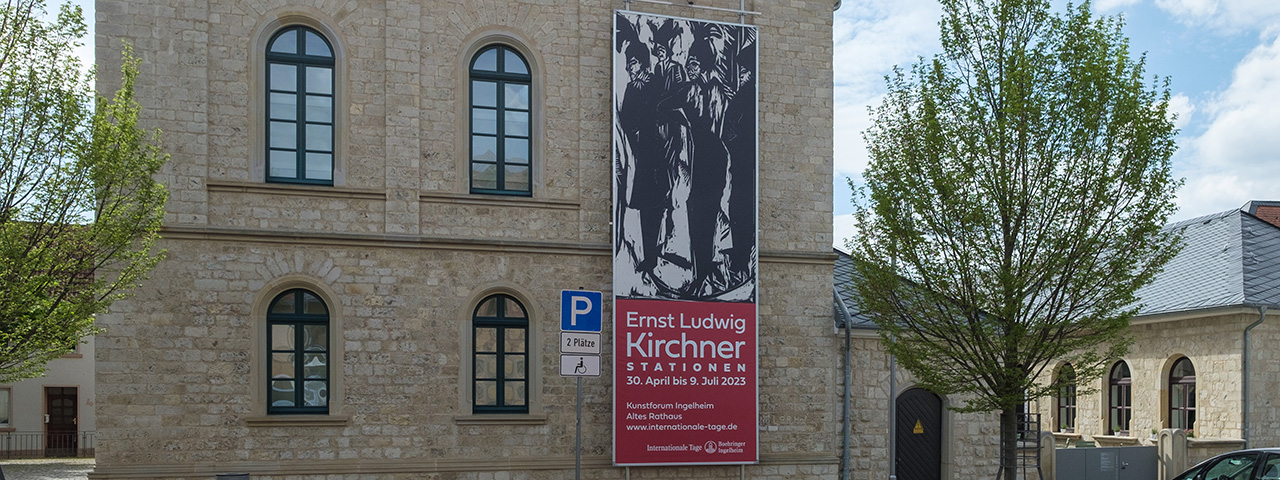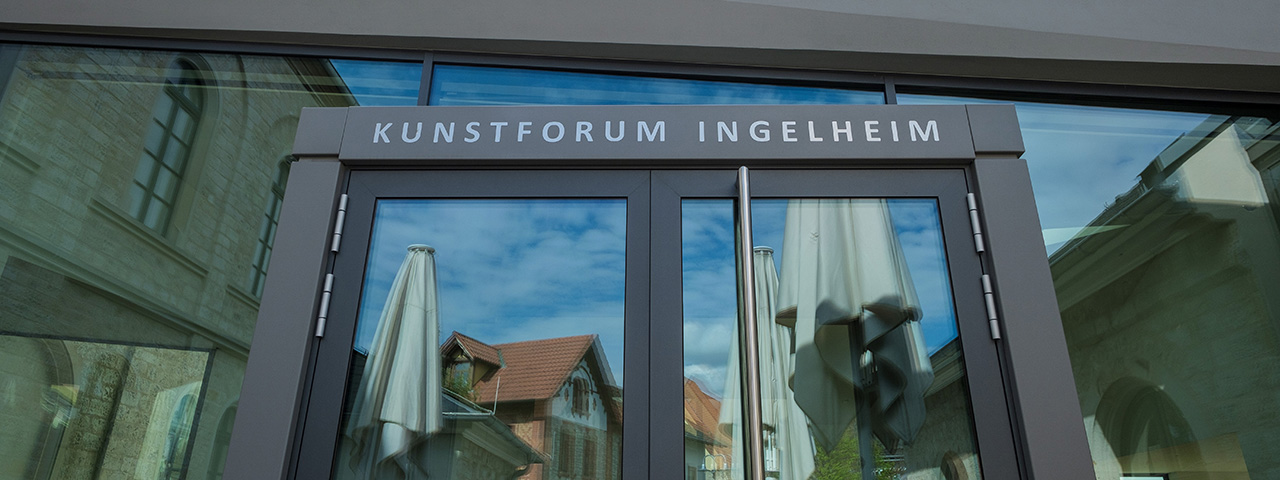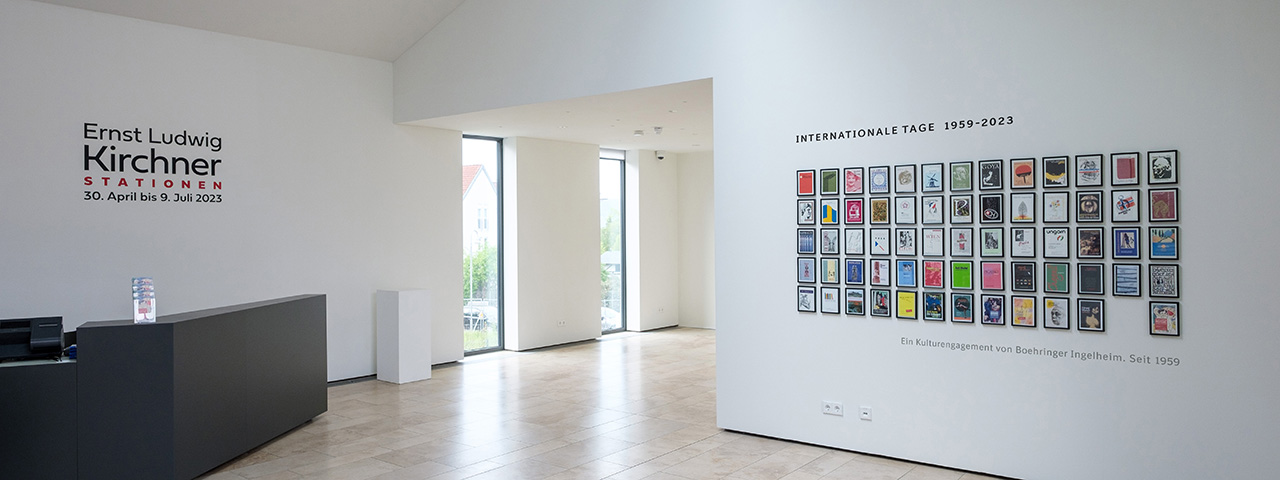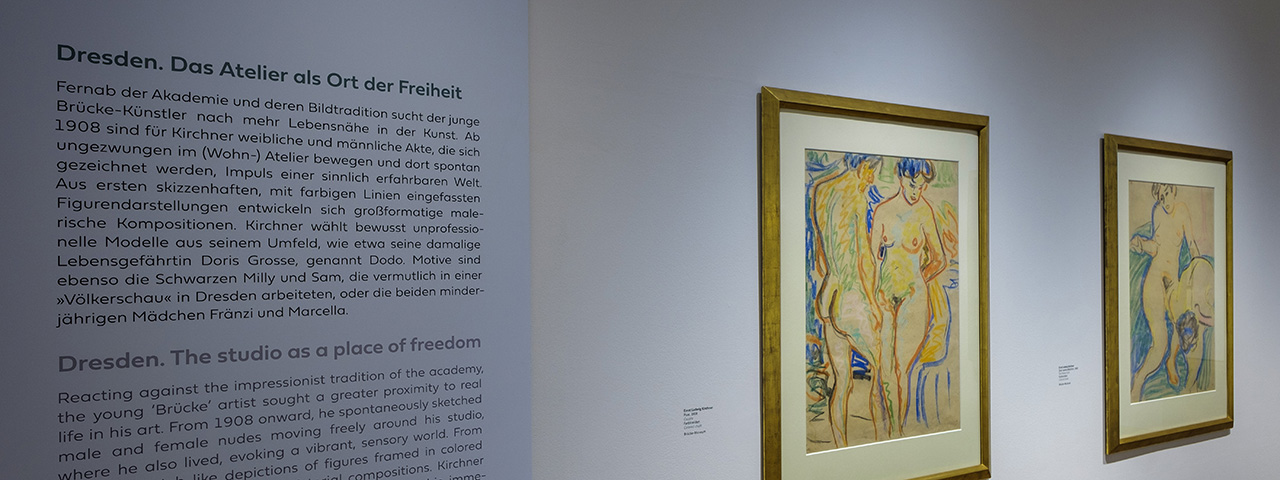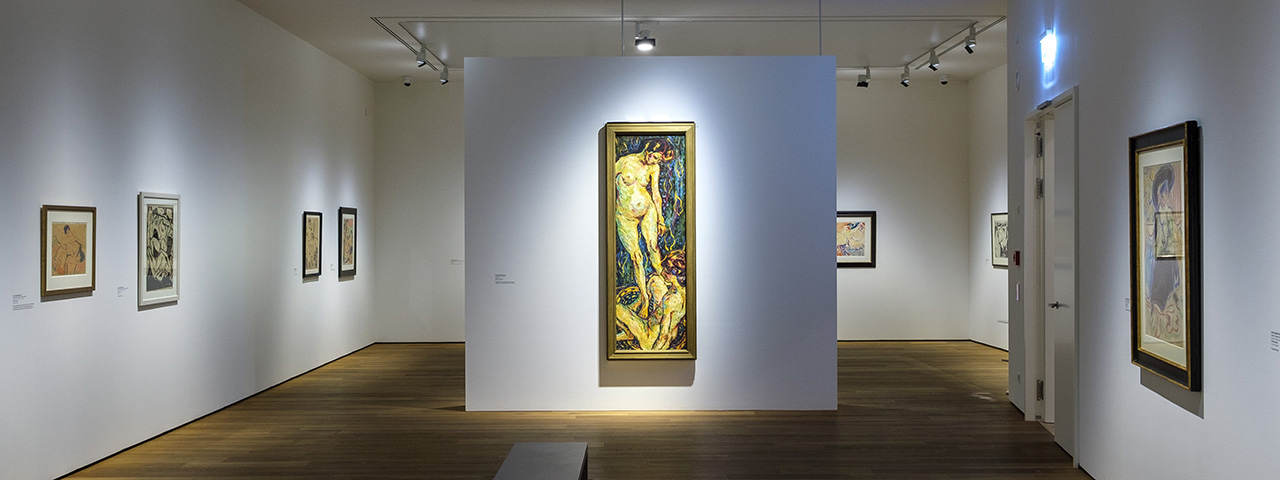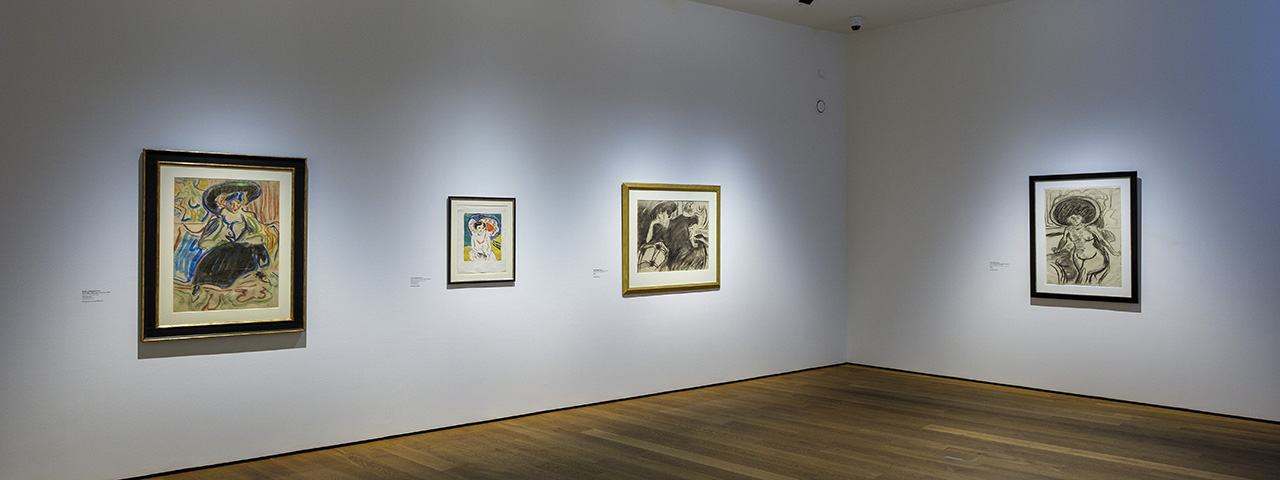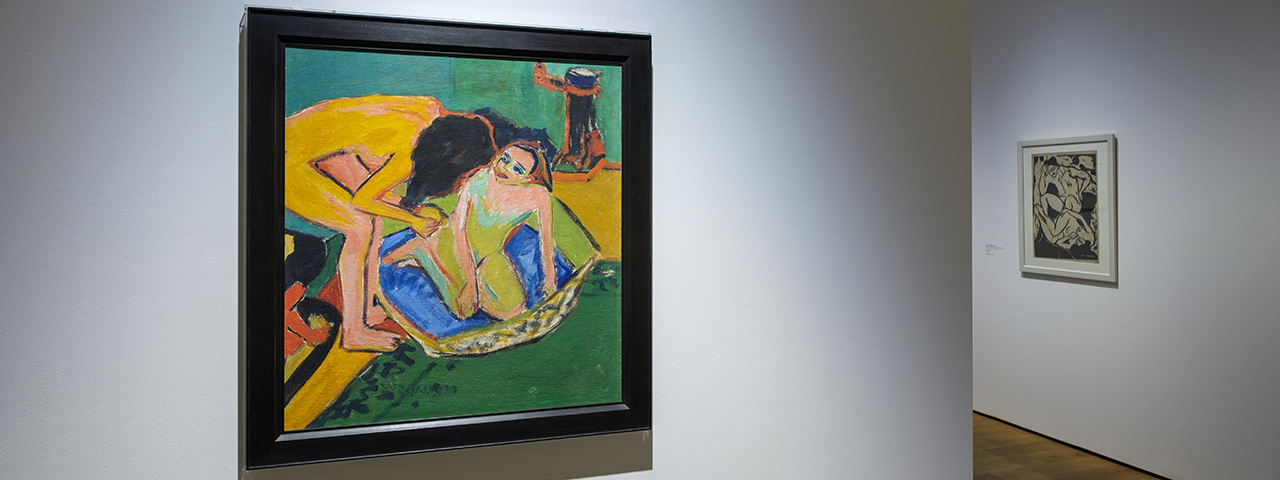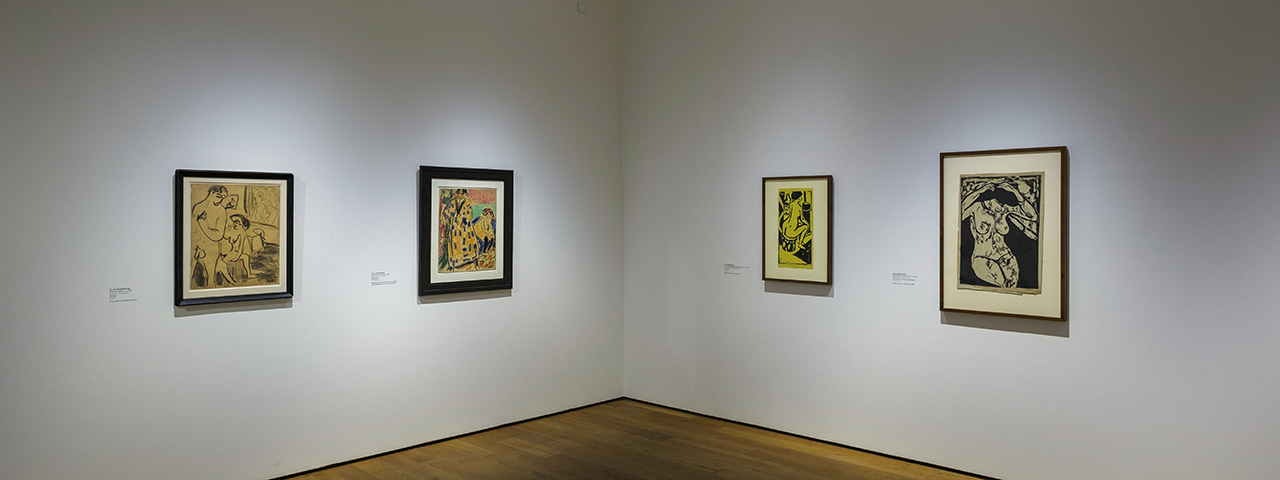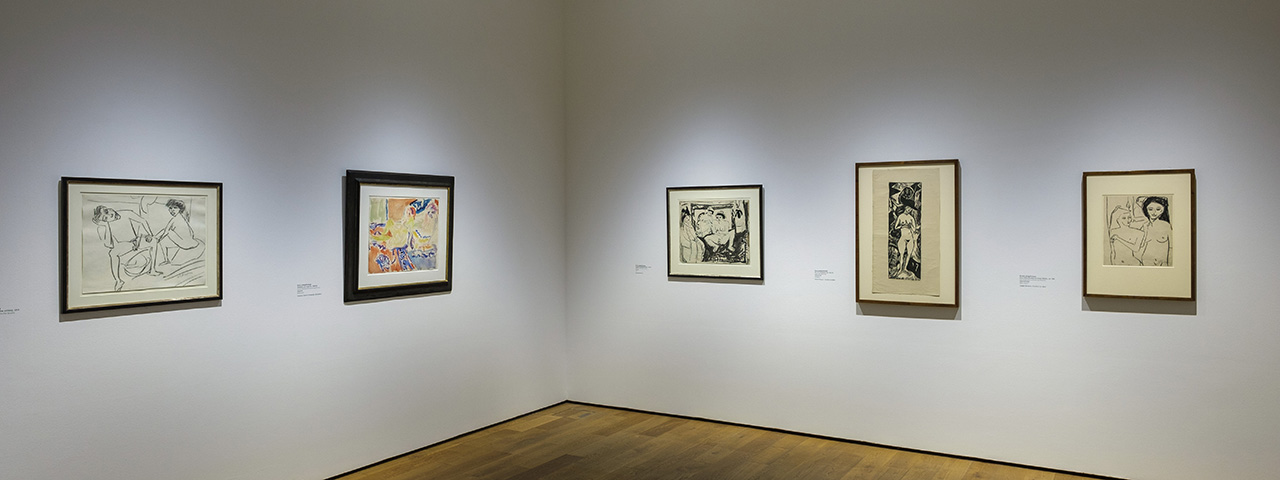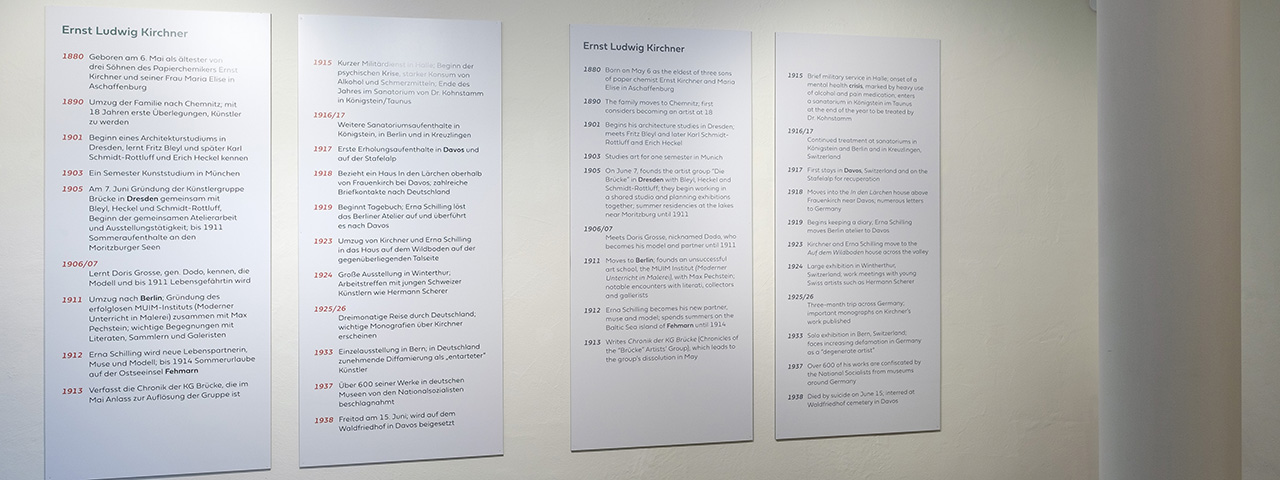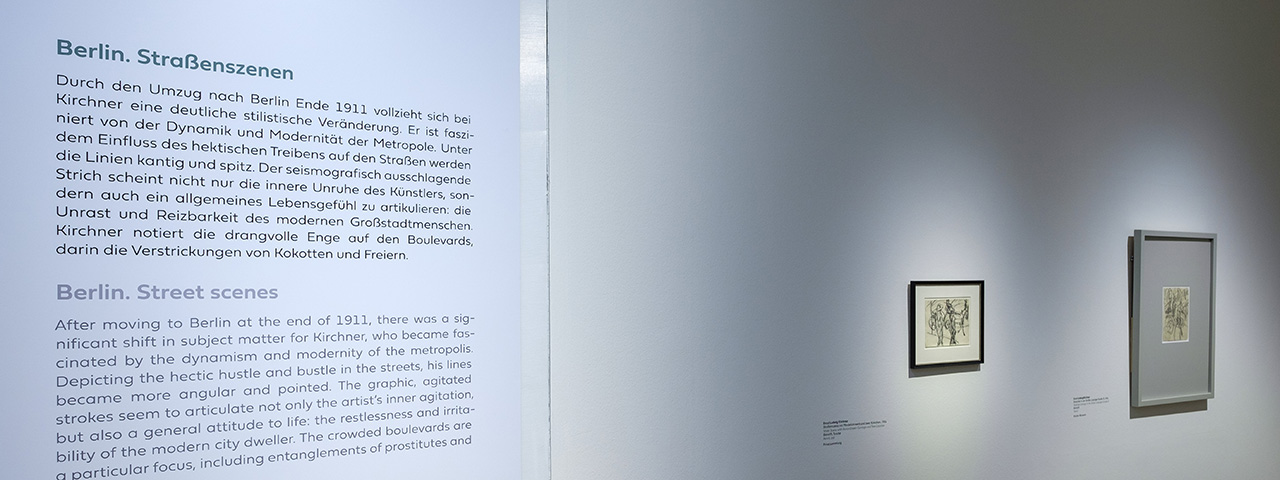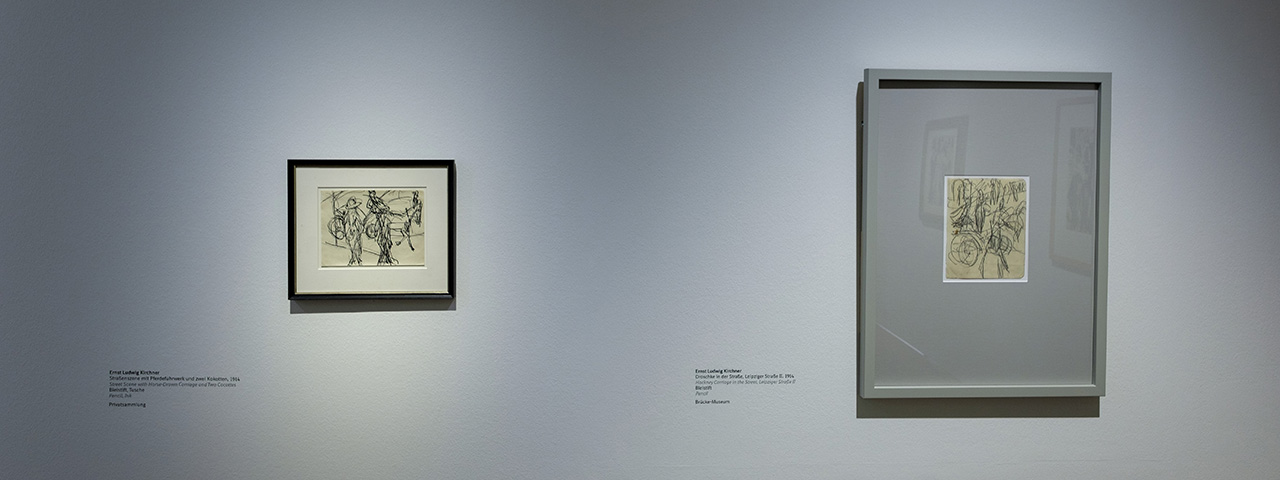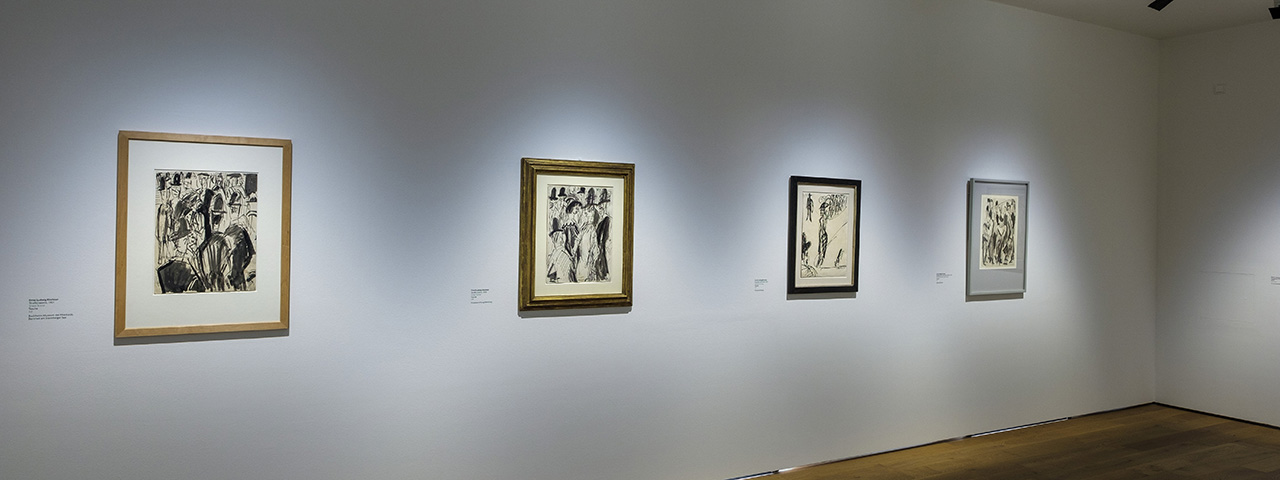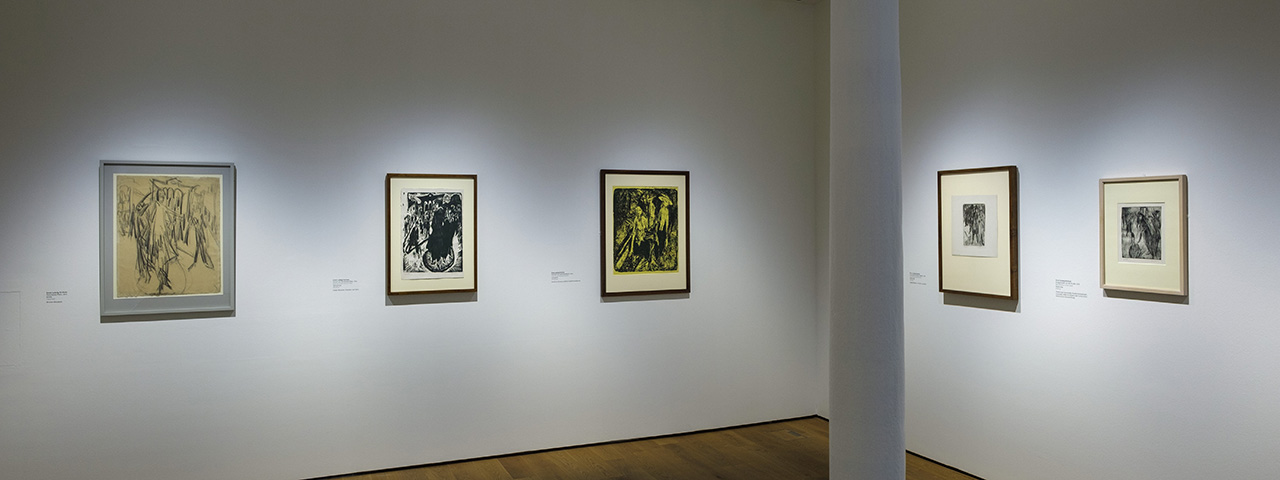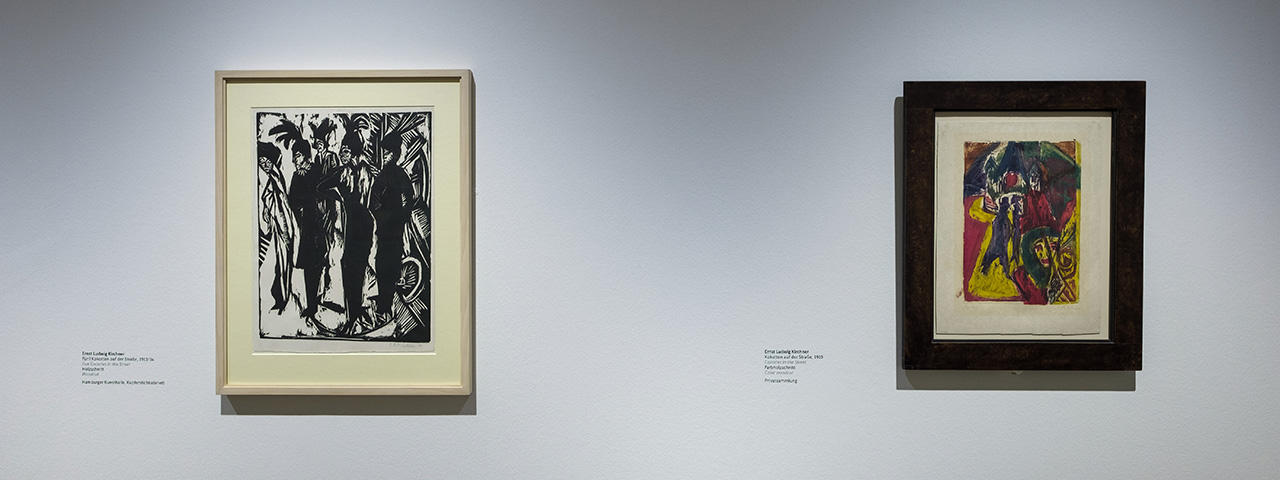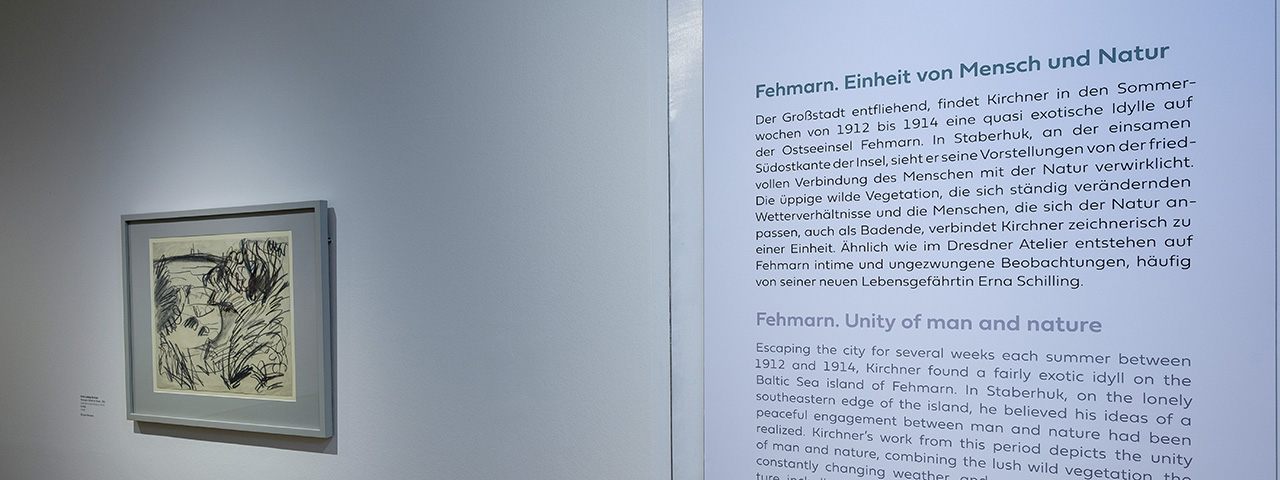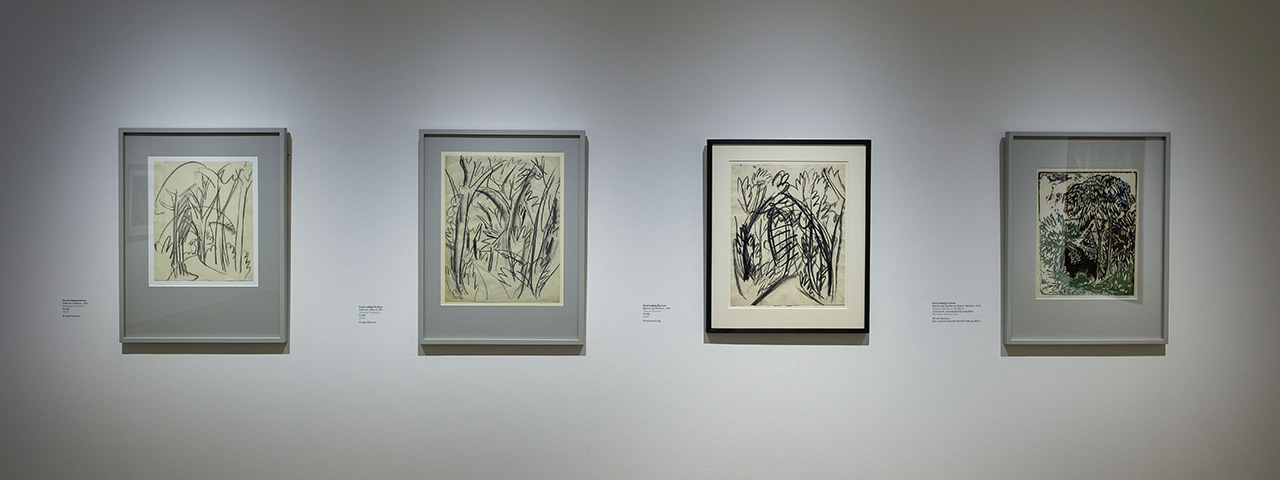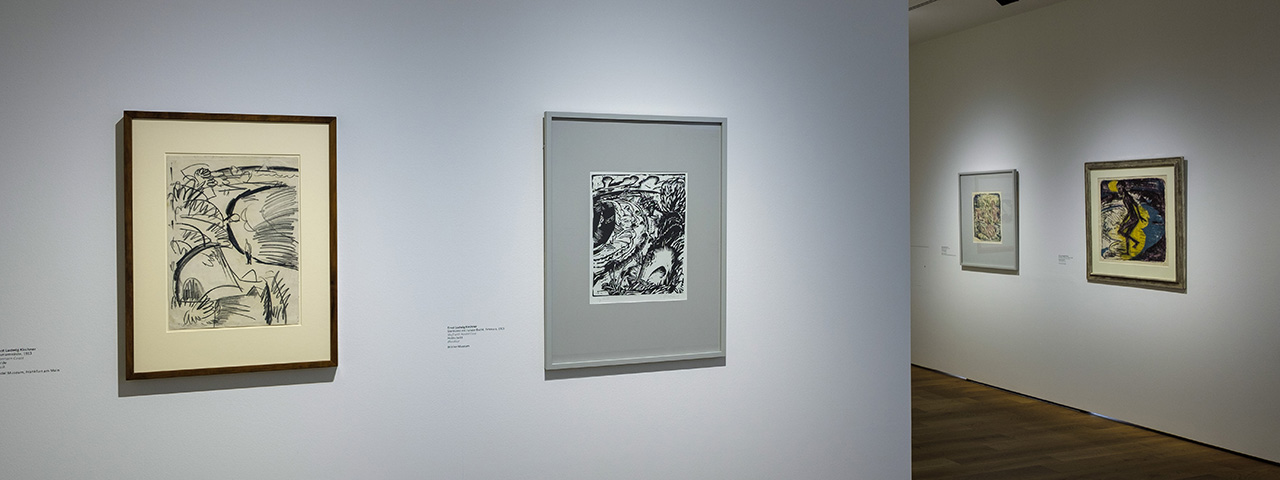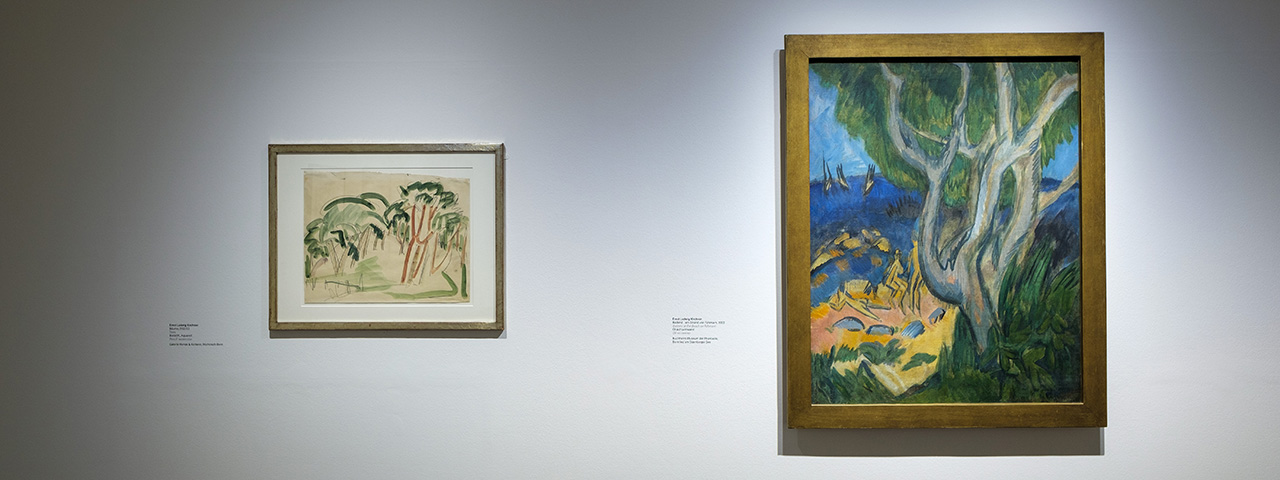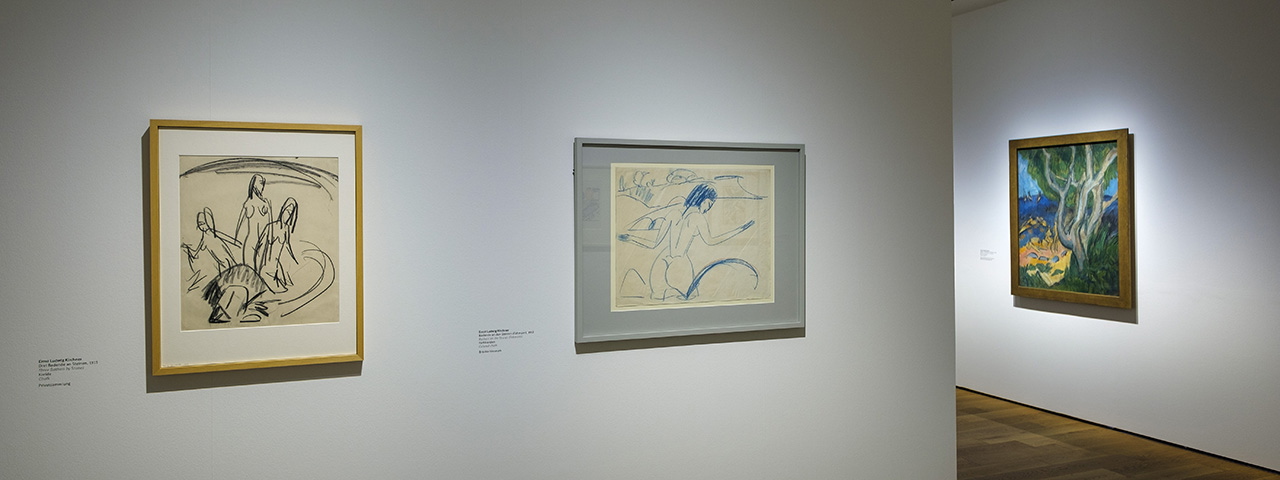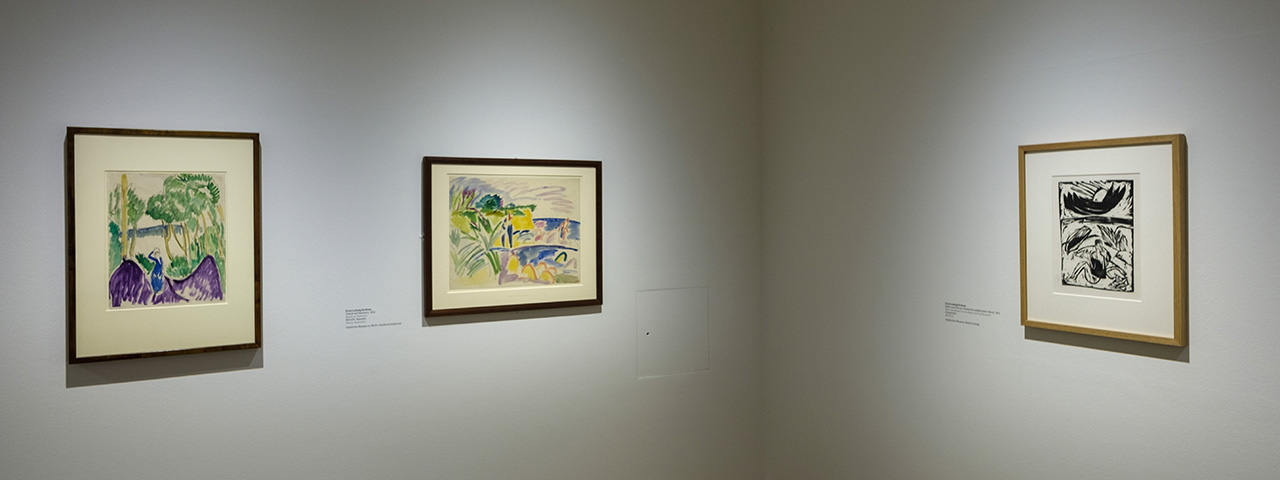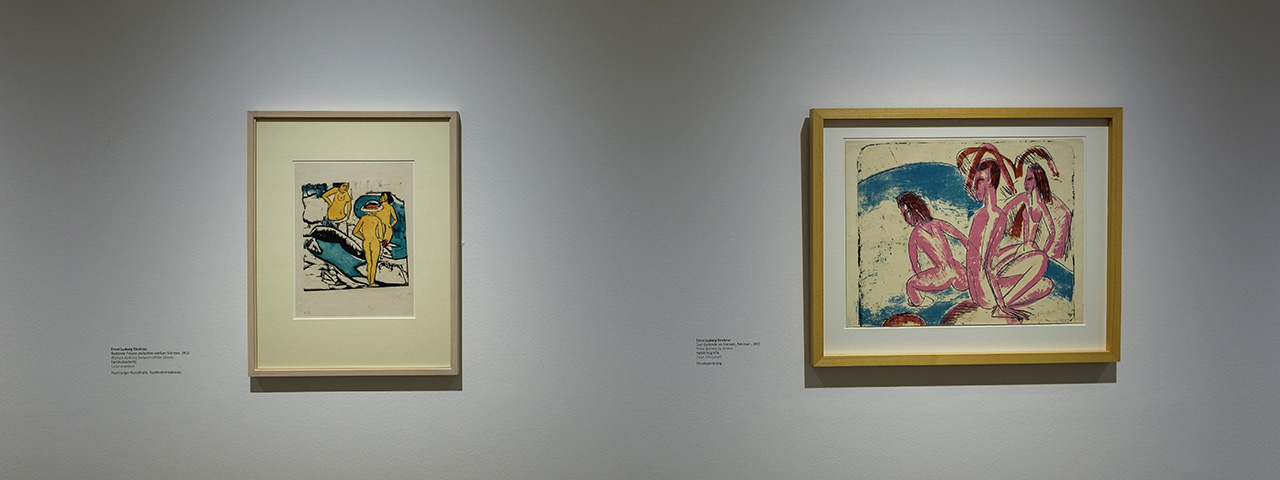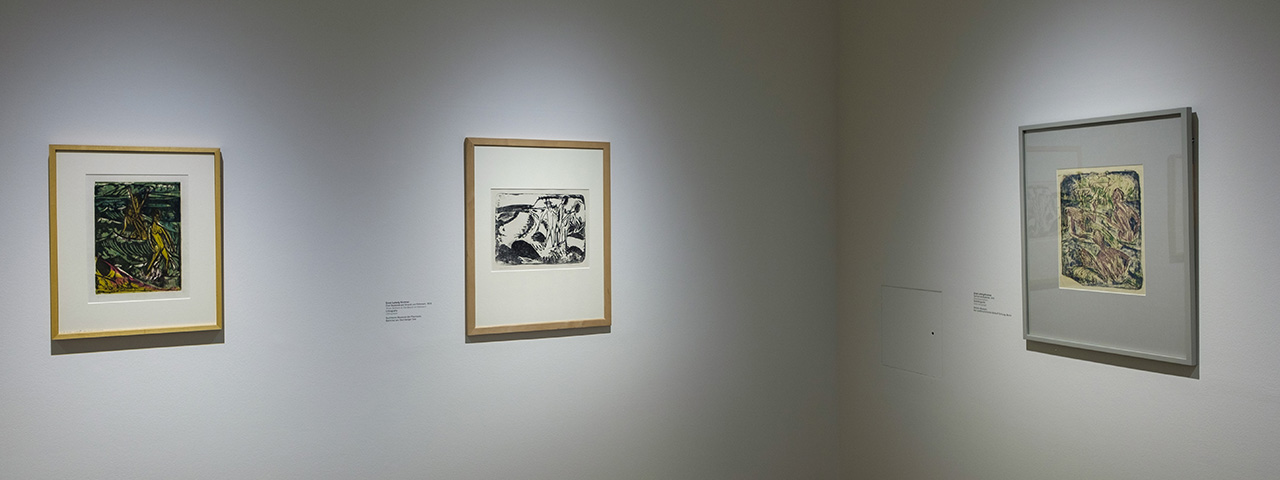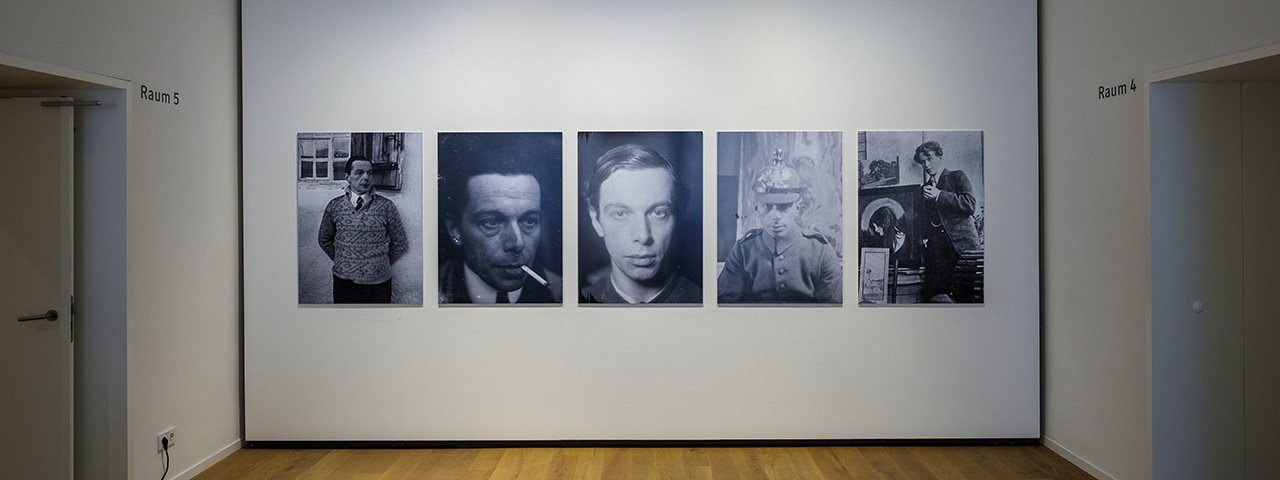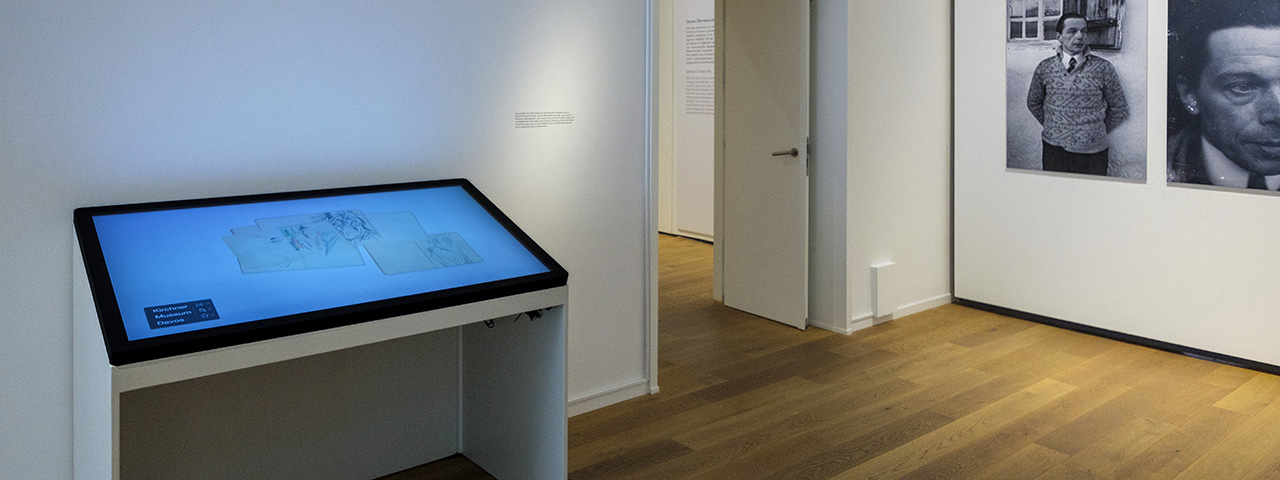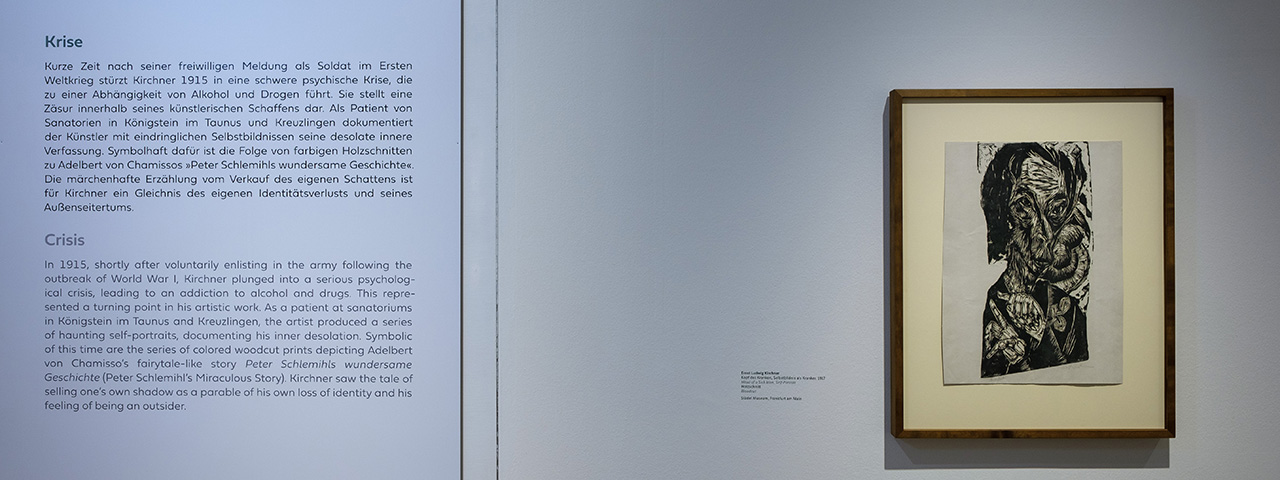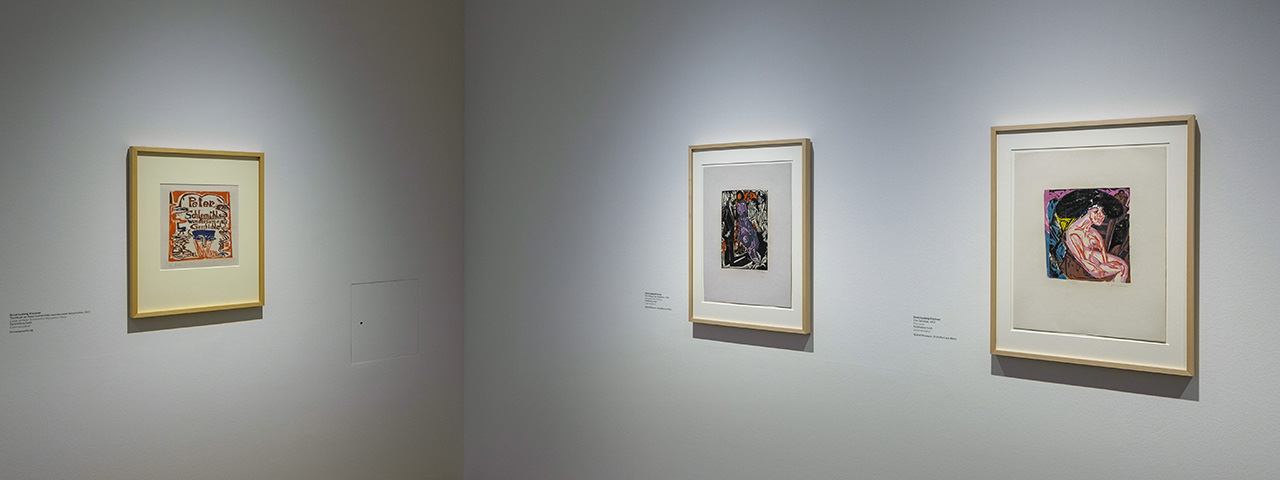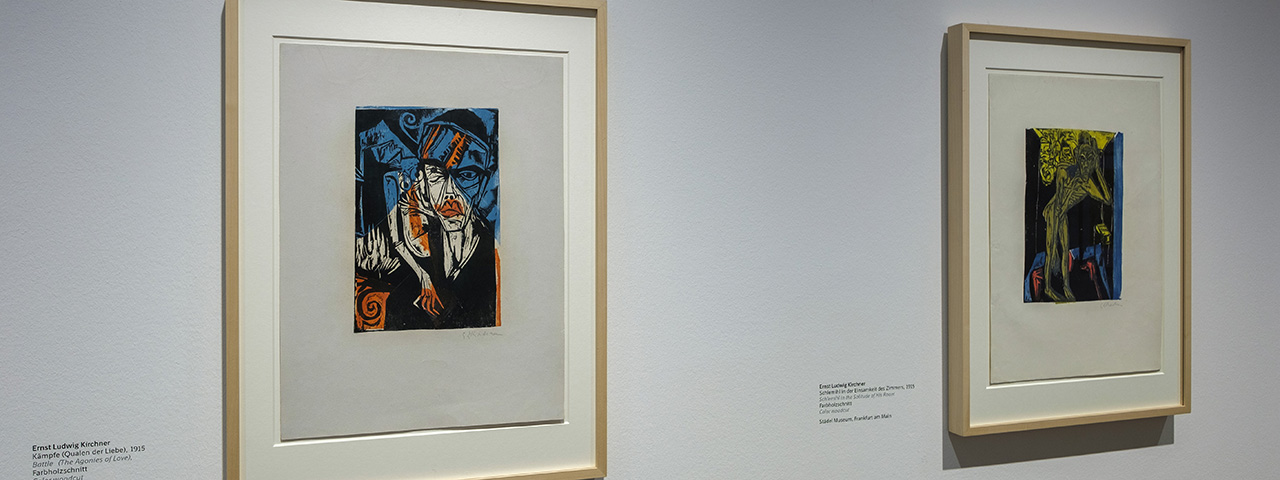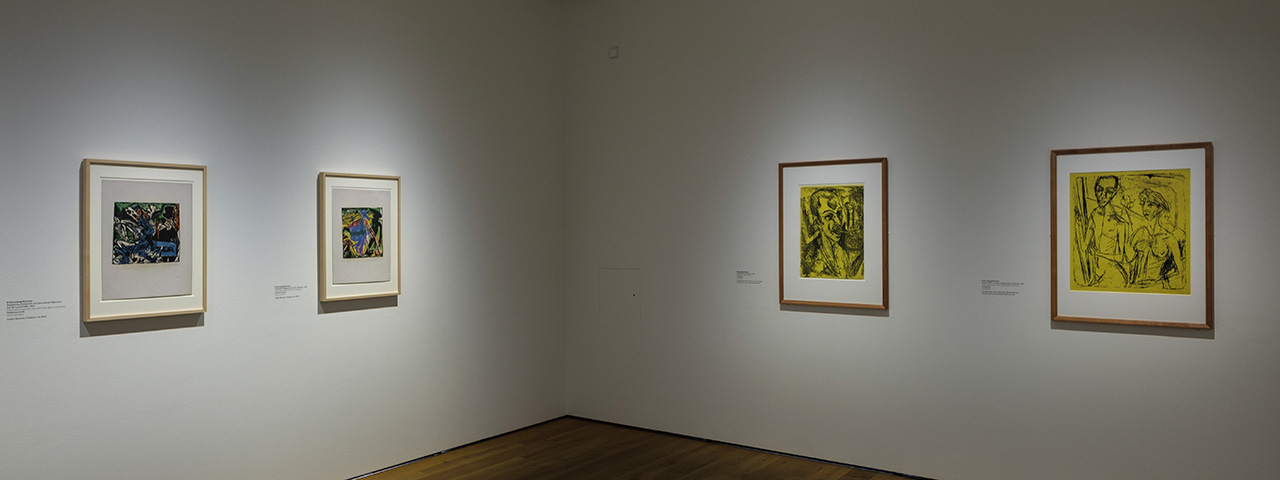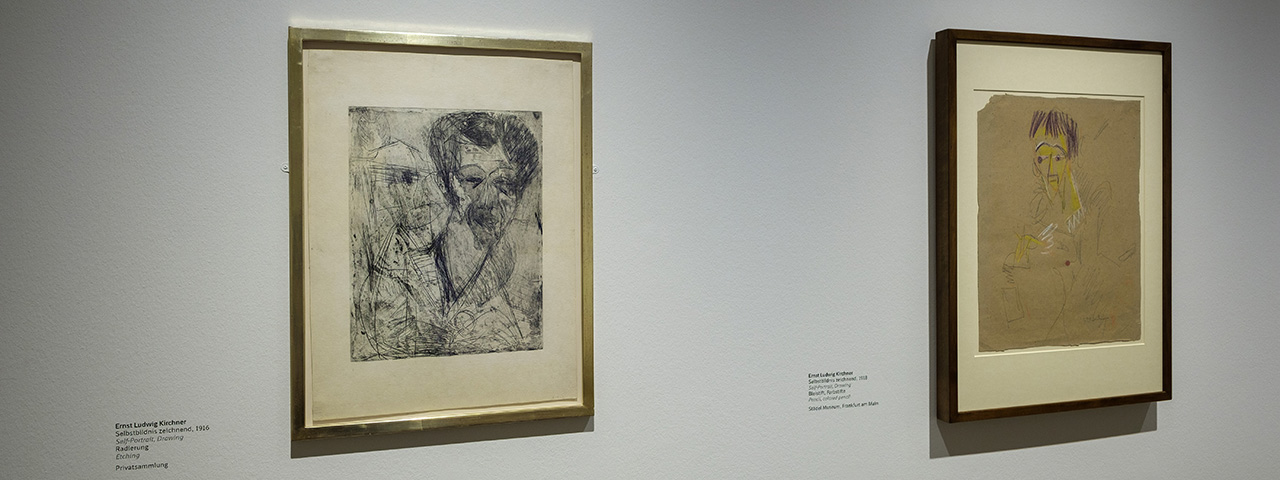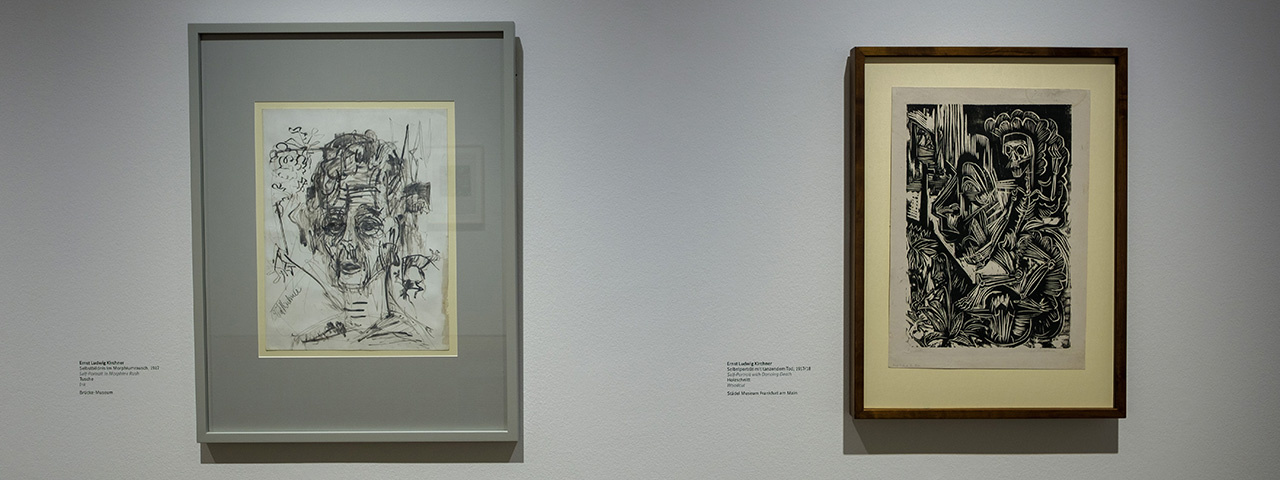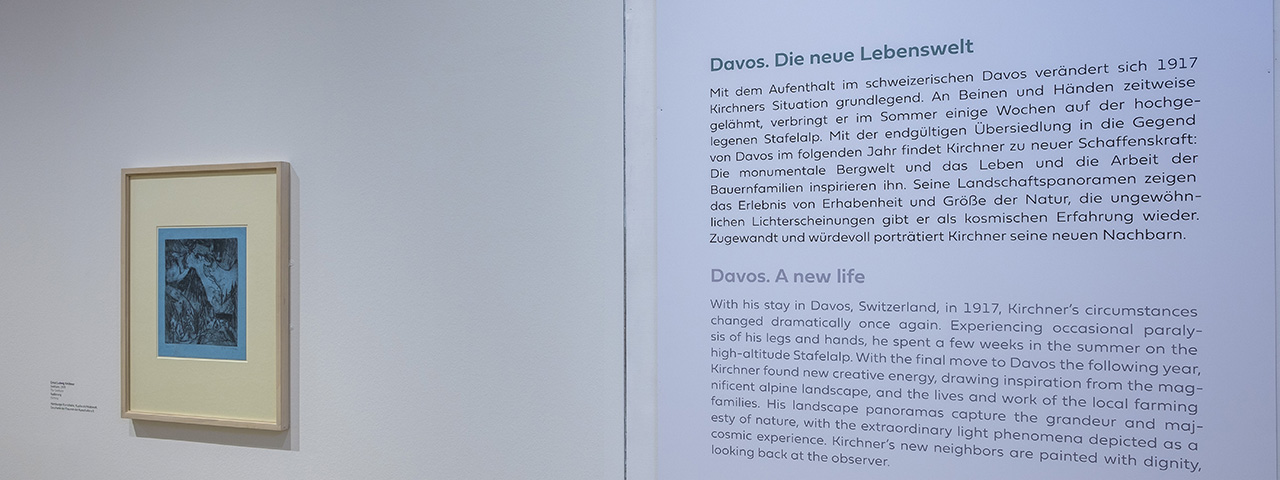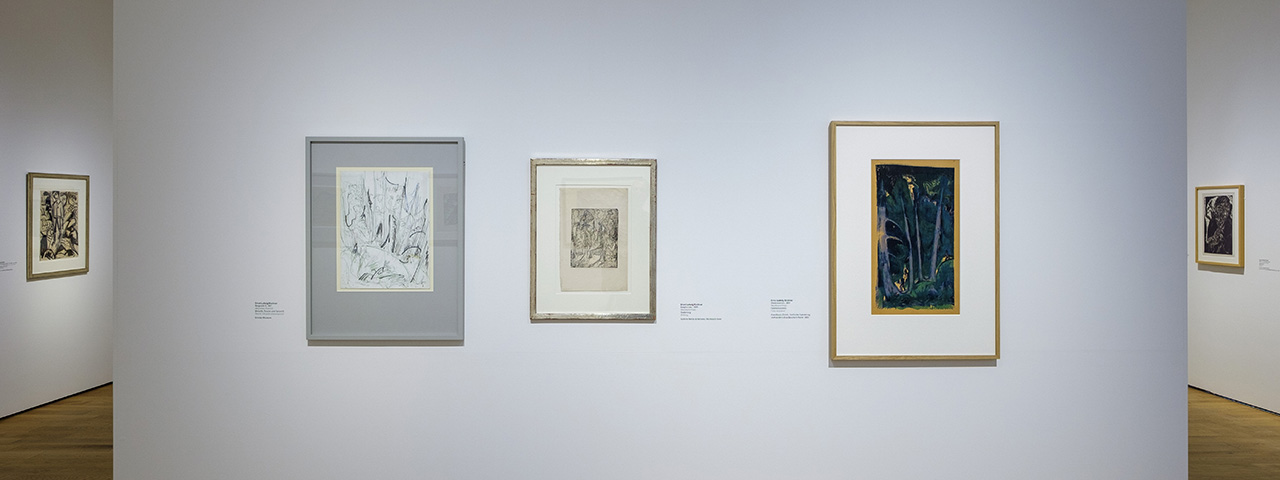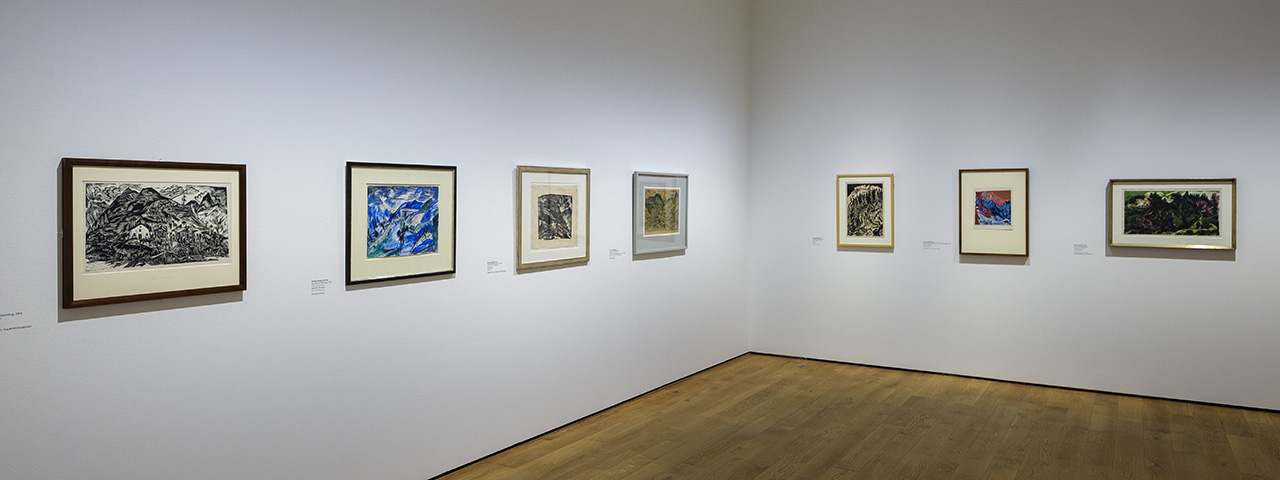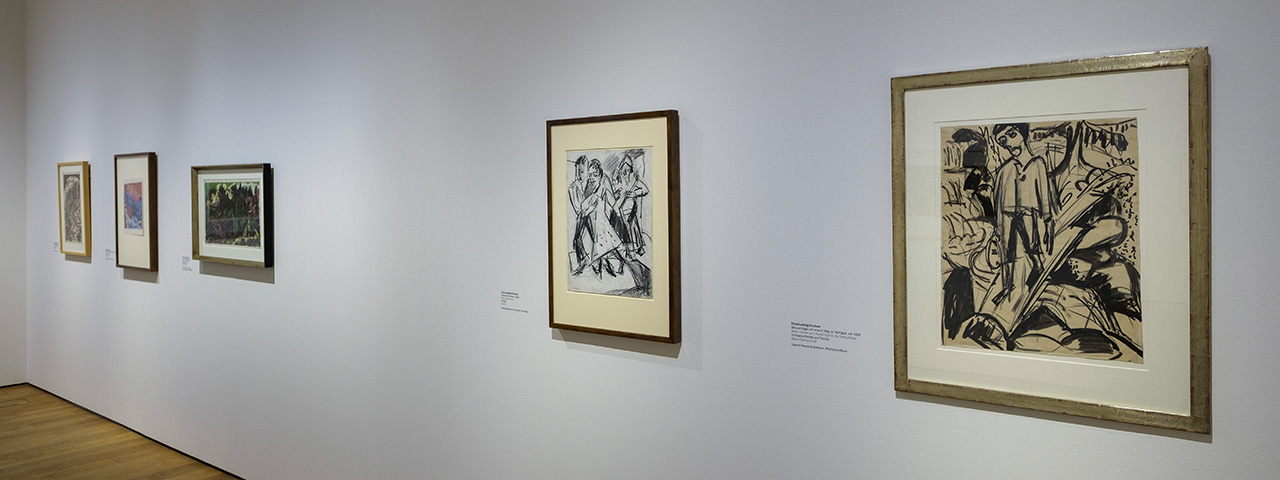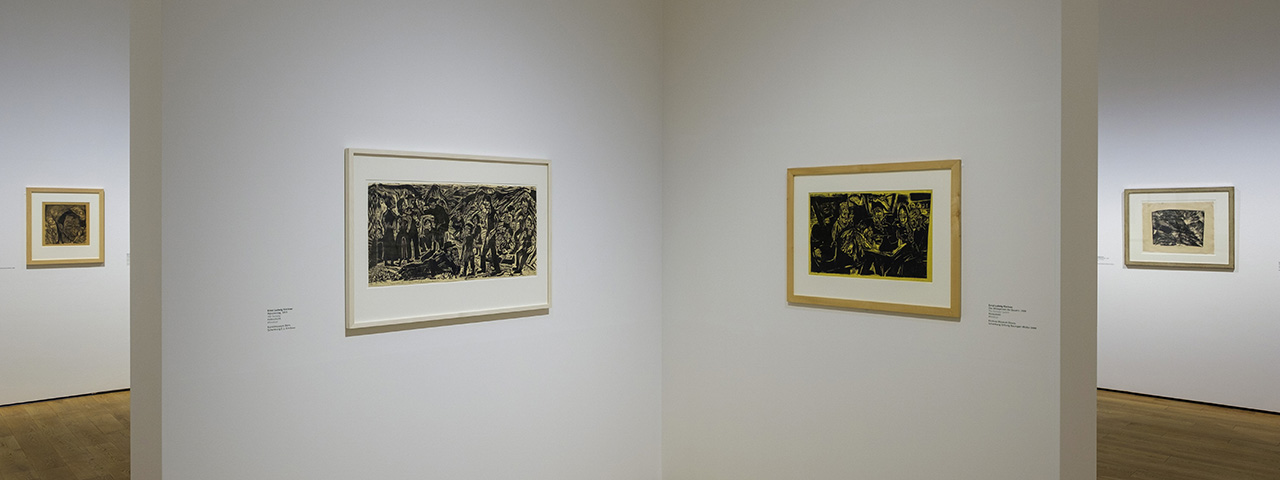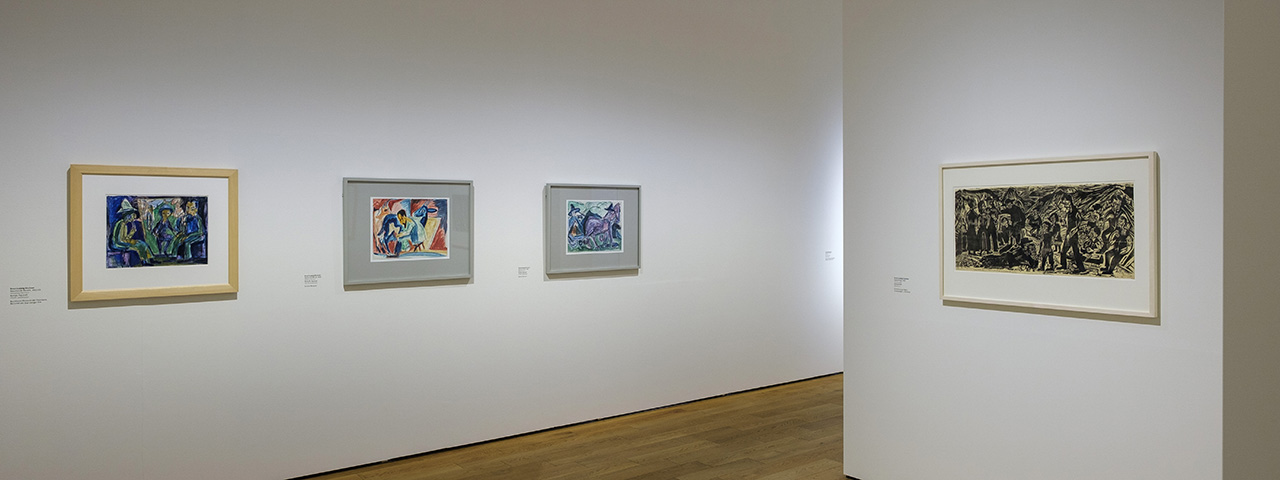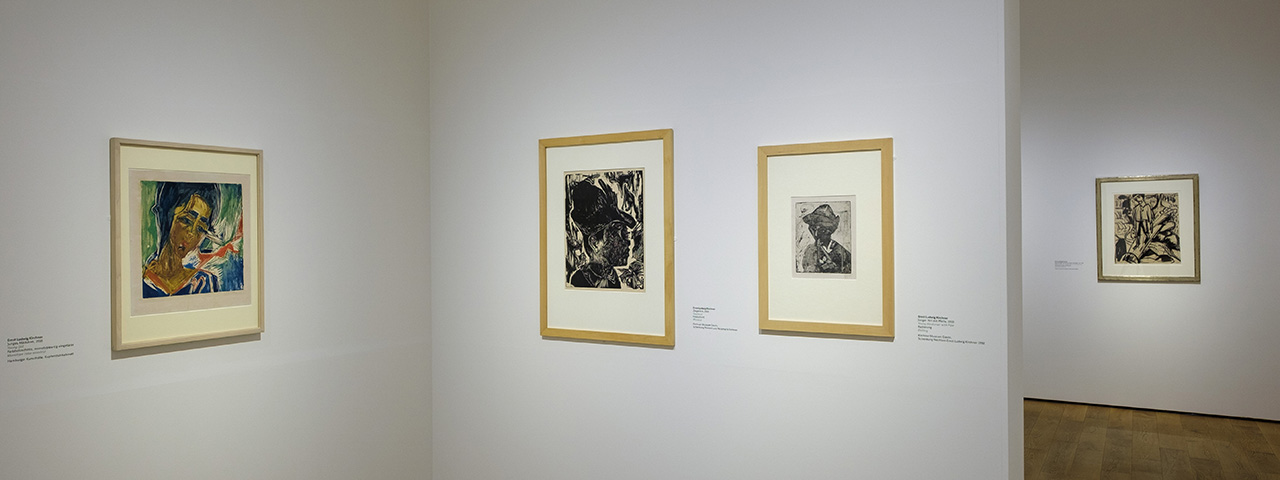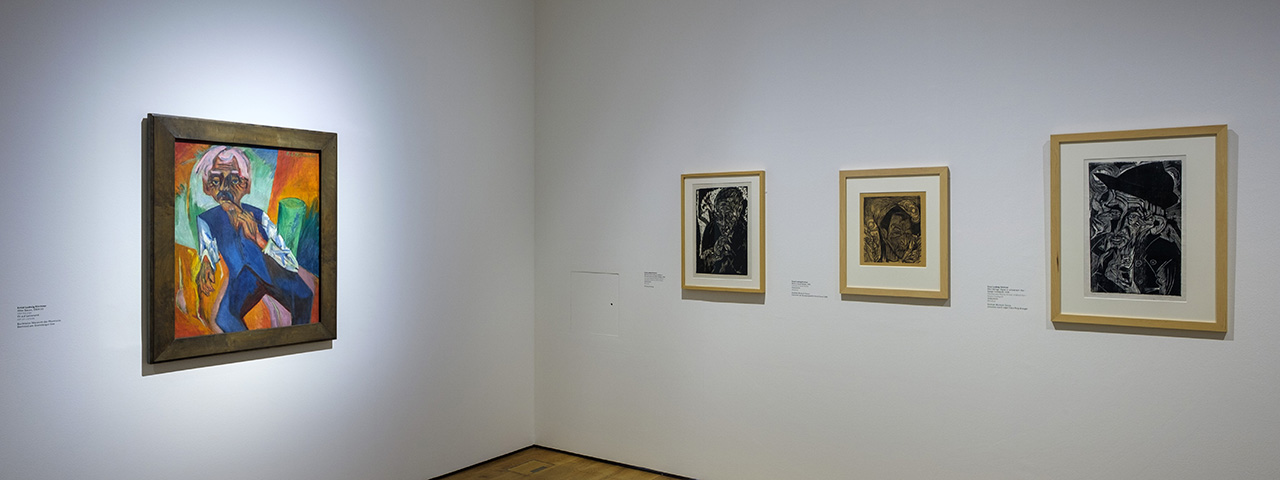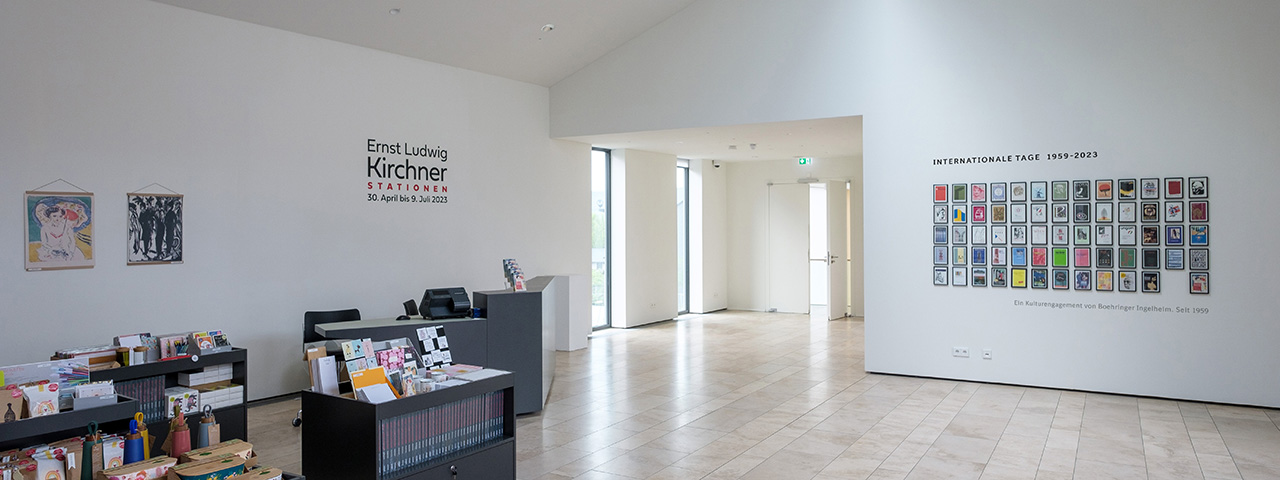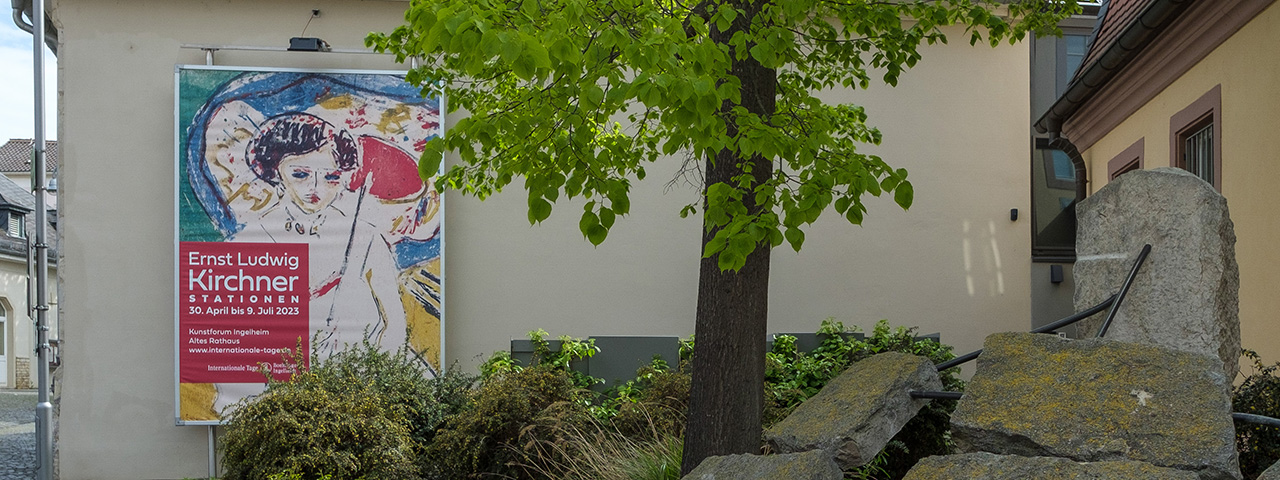Ernst Ludwig Kirchner
Stages
30 April to 9 July 2023
Kunstforum Ingelheim – Altes Rathaus
Kunstforum Ingelheim – Altes Rathaus →
Unfortunately, the exhibition “The Fantastic World of John Elsas” scheduled for the autumn cannot take place for organisational reasons. A new date will be announced in due time.
For the first time, the artistic oeuvre of Ernst Ludwig Kirchner (1880–1938) is presented in a monographic exhibition as part of the International Days in Ingelheim. With over 90 works – drawings, watercolours, prints and some exemplary paintings – insights into the most important stages of one of the most significant and influential artists in Germany are provided.
This presentation has been conceived for the premises of the Kunstforum Ingelheim – Altes Rathaus and, in the five exhibition rooms spread over three floors, shows five stations that were decisive for Kirchner and his art.
For the young artist, who studied architecture in Dresden, it was first of all the atelier, a place of freedom that offered him space for an unconstrained life and artistic creation. This is where the often revealing compositions are created that reflect the interaction between the models and the artist. An important role between the small, intimate depictions and the paintings is played by large-format drawings with which Kirchner creates pictorial compositions.
Even before he moved to Berlin in 1913, Kirchner’s style changed, moving away from flowing lines towards an edgier pictorial language. This came to him in the Berlin street scenes, in which he observed in an unusual way the relationships between cocottes and their suitors.
The stays on the Baltic Sea island of Fehmarn, especially in 1913 and 1914, opened up for the artist the longed-for unity of man and nature, which merged together. The sometimes harsh weather and the hustle and bustle of the bathers inspire Kirchner to produce a large number of drawings and prints, which are among the most important parts of his entire oeuvre.
Conscripted as a soldier in the First World War, Kirchner plunges into a severe psychological crisis that marks a caesura in his art. As a patient in sanatoriums in Berlin, Königstein and Kreuzlingen, he documented his desolate inner condition in self-portraits. Symbolic of this is also the series of coloured woodcuts to Adalbert von Chamisso’s “Peter Schlemihl’s Wondrous Tale”.
Kirchner’s first stay in Davos in 1917 marked the beginning of a new world of living. Initially paralysed in the arms and legs, he observes the simple life of his neighbours, surrounded by the monumental mountain world. Far away from the art world, Kirchner found a new creative energy that combined the experience of nature and the people surrounding him.
Ernst Ludwig Kirchner. Stationen
21,5 x 27,5 cm, 175 Seiten, herausgegeben von Ulrich Luckhardt mit Texten von Dagmar Lott, Meike Hoffmann, Ulrich Luckhardt, Karsten Müller, Thomas Röske und Aya Soika.
Preis 25,00 € (for the duration of the exhibition, afterwards 34,90 €)
Order catalogue →

